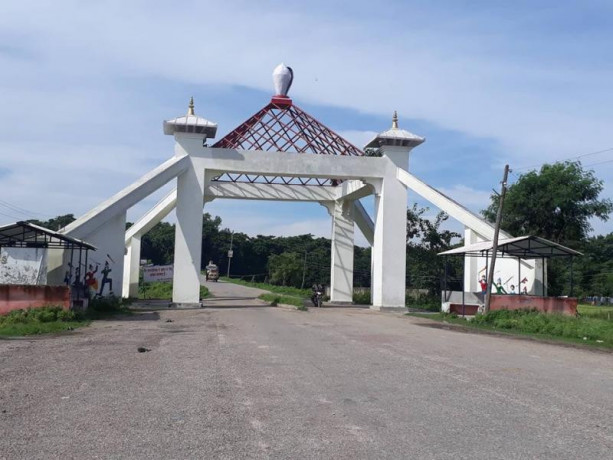Gaur: The Vibrant City of Rautahat District, Nepal Professional
Jul 9th, 2024 at 15:03 Blogs Gaur 477 views Reference: 1387Location: Gaur
Price: Contact us
Gaur: The Vibrant City of Rautahat District, Nepal
Gaur, the district headquarters of Rautahat District in Province No. 2, is a bustling city located in the southern plains of Nepal. Known for its rich cultural diversity, historical significance, and economic activity, Gaur serves as an important administrative, commercial, and cultural hub in the Terai region.
Historical Background
Gaur has a long and rich history that dates back to ancient times. The city has been a center of trade, culture, and politics for centuries, influenced by its proximity to the Indian border. Gaur's historical significance is marked by various events and figures, including its role in the medieval and modern periods of Nepal's history. The city's strategic location made it a vital point for trade and cultural exchanges between Nepal and India.
Geographical Significance
Situated at an elevation of approximately 79 meters (259 feet) above sea level, Gaur enjoys a subtropical climate characterized by hot summers and mild winters. The city is located in the fertile plains of the Terai, which support extensive agricultural activities. The Bagmati River flows near Gaur, adding to the region's agricultural viability and natural beauty.
Economic Development
Gaur's economy is primarily driven by agriculture, trade, and services. The fertile plains of the Rautahat District are ideal for farming, with major crops including rice, wheat, maize, sugarcane, and various fruits and vegetables. Livestock farming also plays a significant role in the local economy.
Trade and commerce are vital to Gaur's economic landscape. The city's markets are vibrant, offering a wide range of goods from agricultural produce to manufactured items. Gaur's strategic location near the Indian border facilitates cross-border trade, enhancing economic opportunities and cultural exchange.
In recent years, the service sector, including education, healthcare, and retail, has seen significant growth. This diversification of the economy has contributed to the overall development and modernization of the city.
Educational and Health Facilities
Gaur is emerging as an educational center in the southern plains of Nepal. The city hosts several schools, colleges, and technical institutes that provide quality education to students from the Rautahat District and neighboring areas. Notable institutions include Gaur Campus and various public and private schools that offer higher education opportunities in diverse fields.
Healthcare facilities in Gaur have also improved significantly over the years. The city is equipped with hospitals, clinics, and health centers that provide medical services and treatments to residents. The District Hospital in Gaur is a major healthcare provider, offering a range of medical services and treatments.
Cultural Diversity
Gaur is a melting pot of cultures, home to a diverse population that includes ethnic groups such as Tharu, Yadav, Muslim, Brahmin, Chhetri, and various other communities. This diversity is reflected in the city's festivals, traditions, and everyday life. Major festivals like Dashain, Tihar, Chhath, Eid, and Holi are celebrated with great enthusiasm, showcasing the rich cultural heritage of the region.
The city is also known for its vibrant local arts and crafts, including traditional music, dance, and handicrafts. Visitors can experience the local culture through various cultural programs, fairs, and by exploring the traditional villages in the surrounding areas.
Tourist Attractions
While Gaur itself is a lively urban center, it also serves as a gateway to several natural and cultural attractions in the Rautahat District:
1. Bagmati River
The Bagmati River flows near Gaur, providing scenic beauty and opportunities for activities such as boating and fishing. The river is also an important water source for agricultural activities in the region.
2. Maulapur
Located near Gaur, Maulapur is known for its historical and religious significance. The site features ancient temples and is a popular destination for pilgrims and tourists seeking to explore the region's cultural heritage.
3. Shivagadhi
An important religious site located a short distance from Gaur, Shivagadhi is known for its ancient Shiva temple. The site attracts devotees and visitors who come to seek blessings and explore the scenic surroundings.
Connectivity and Transport
Gaur is well-connected by road and has access to various transportation networks. The city is accessible via the East-West Highway, a major road network that links it to other towns and cities in Nepal. Public and private transportation options, including buses and taxis, are readily available, facilitating convenient travel for residents and visitors.
Conclusion
Gaur is a dynamic and vibrant city that encapsulates the cultural diversity, economic vibrancy, and natural beauty of the southern plains of Nepal. Its strategic location, rich history, and improving infrastructure make it an important center for commerce, education, and tourism. As Gaur continues to grow and develop, it holds promise for a brighter future, contributing significantly to the overall progress and prosperity of the Rautahat District and the country as a whole.


